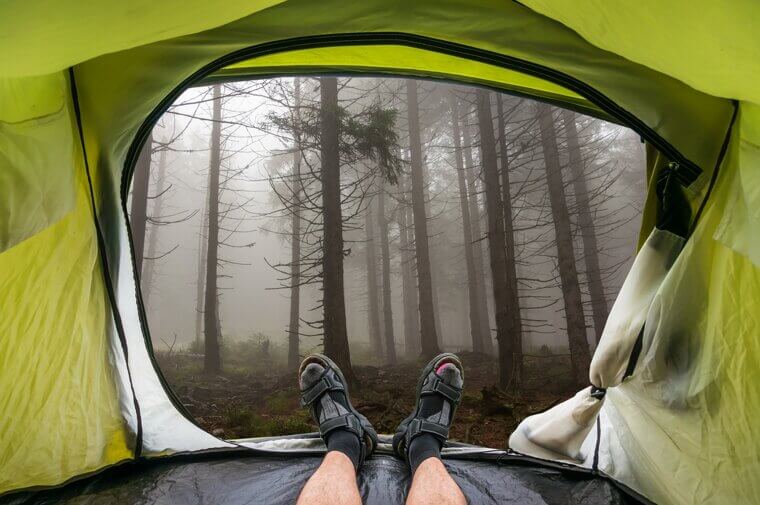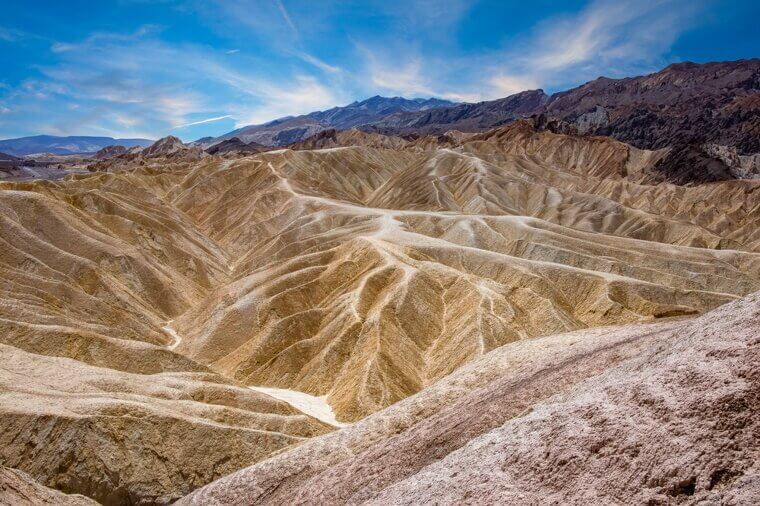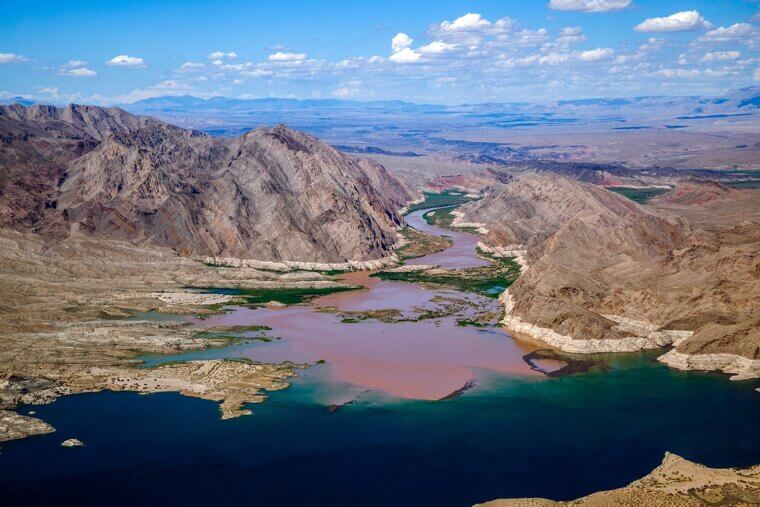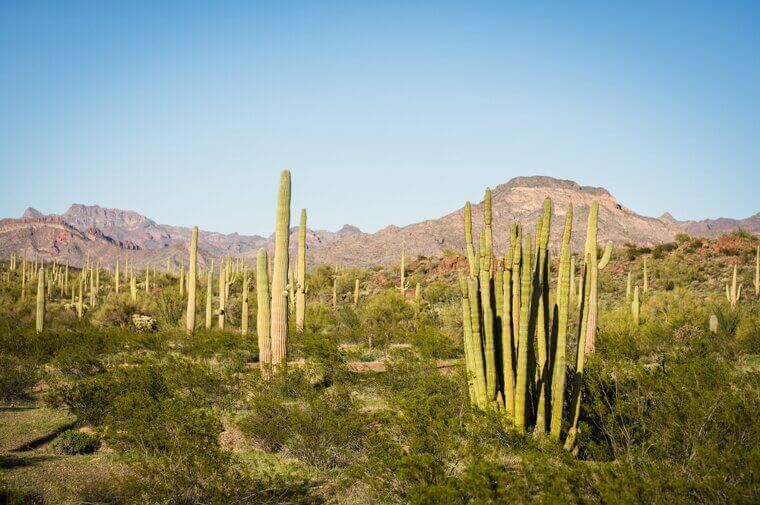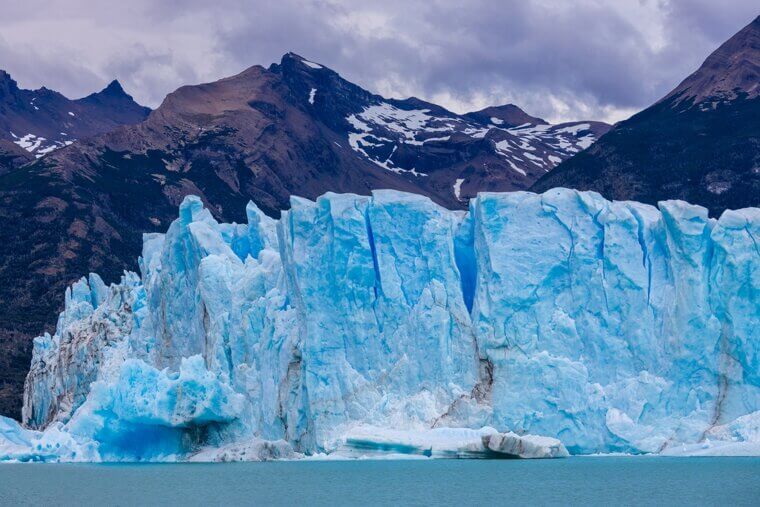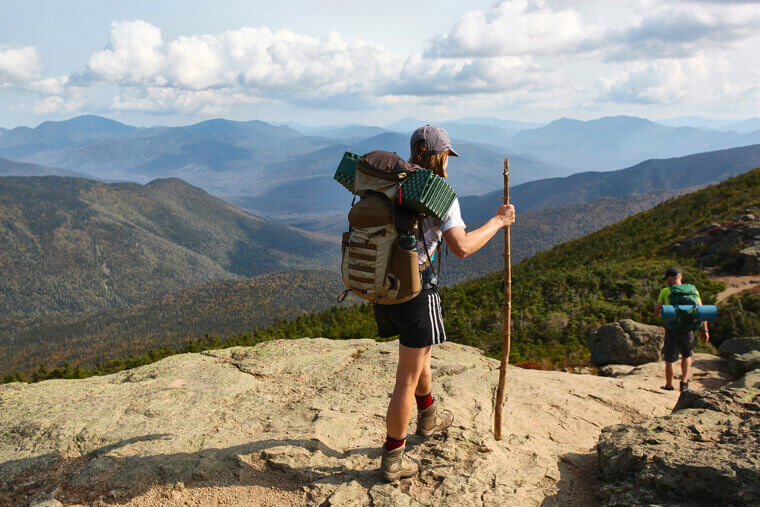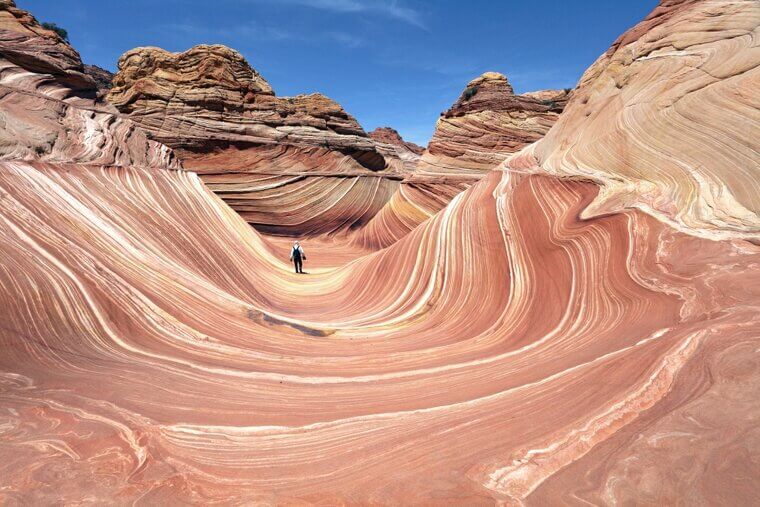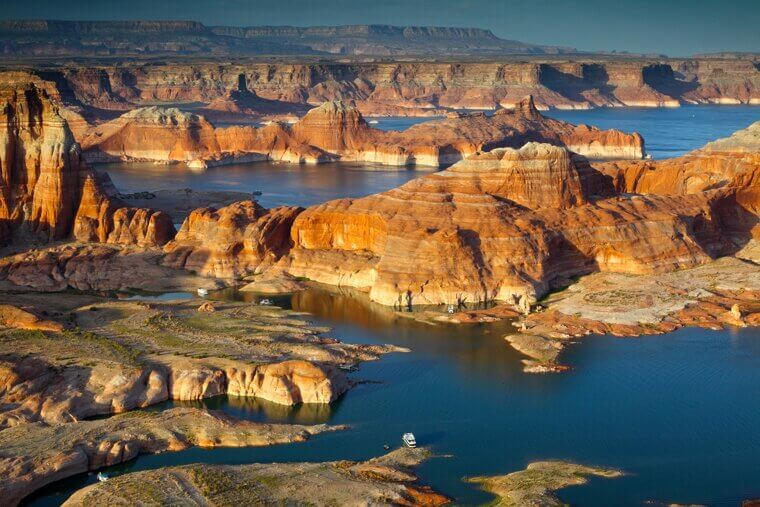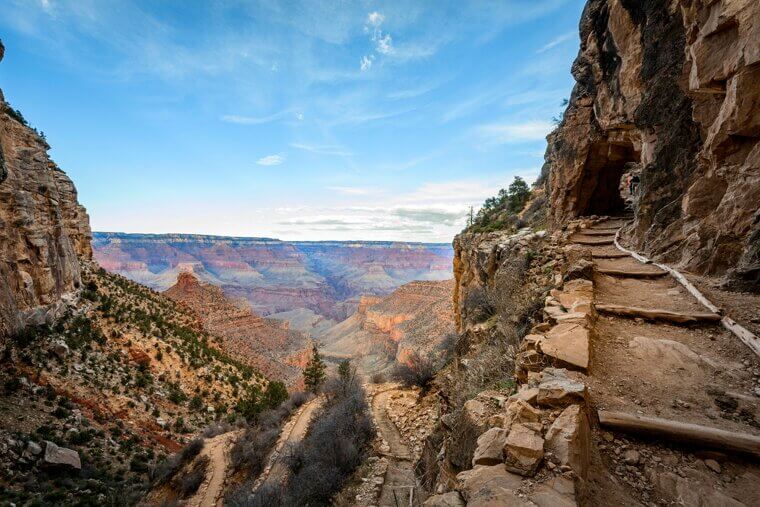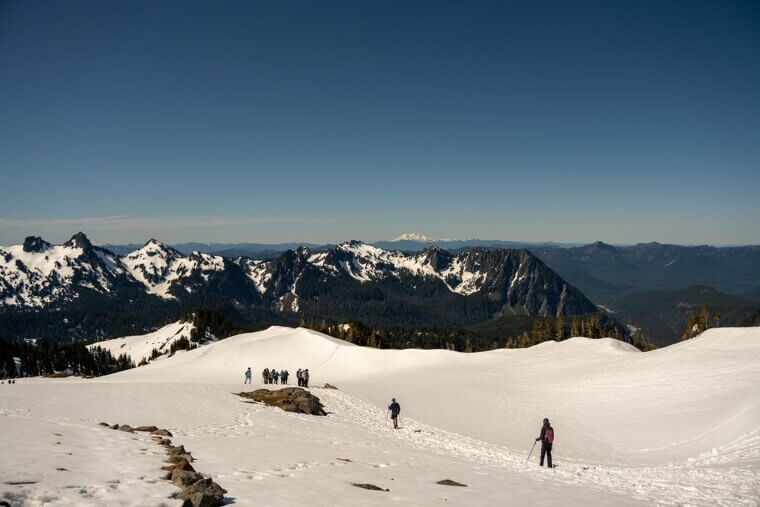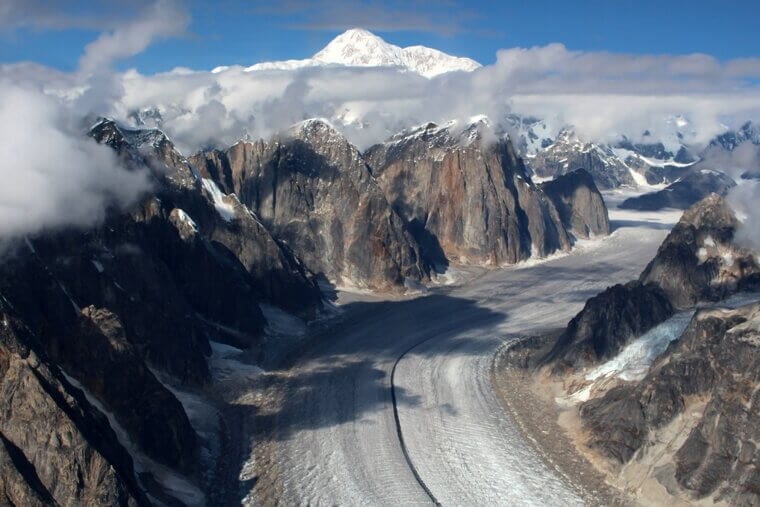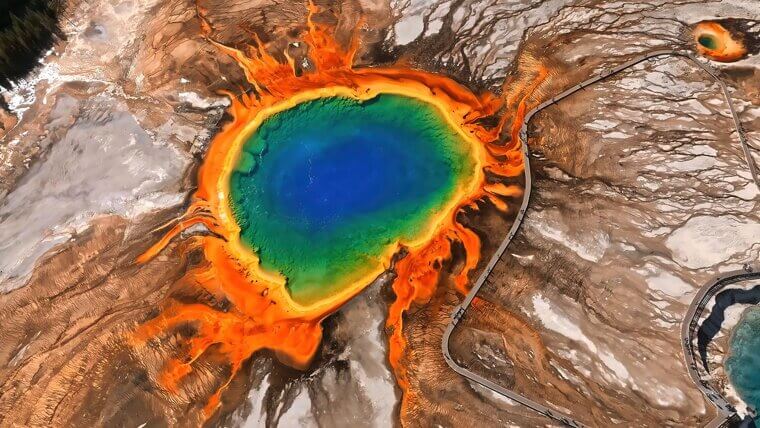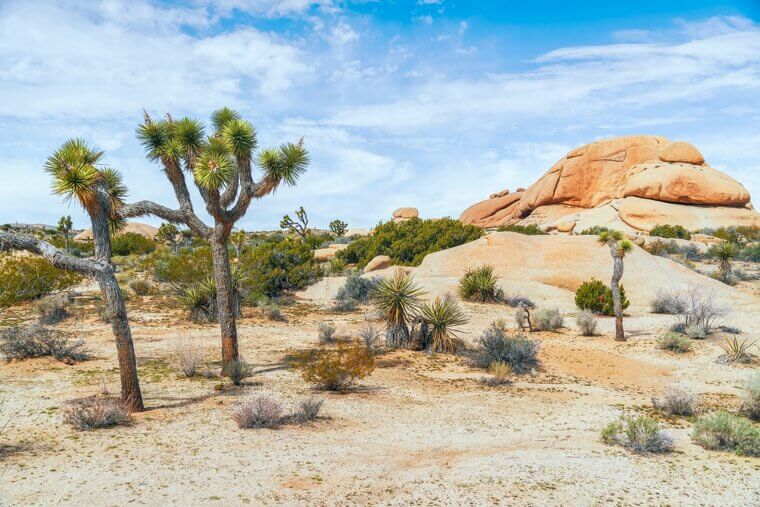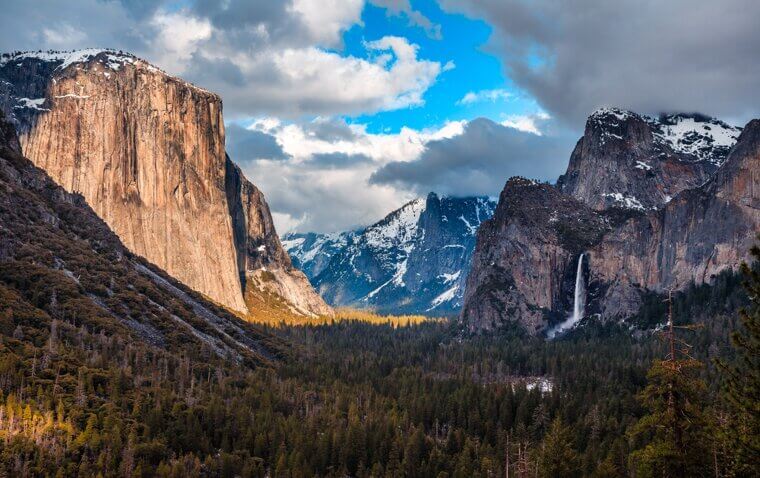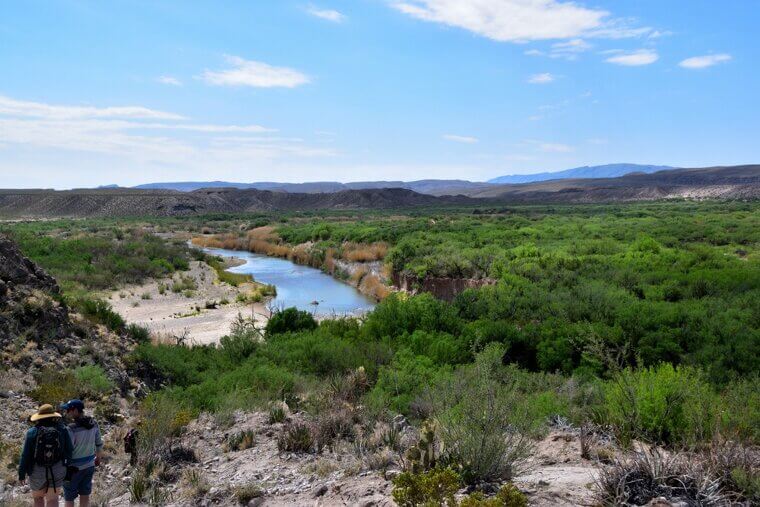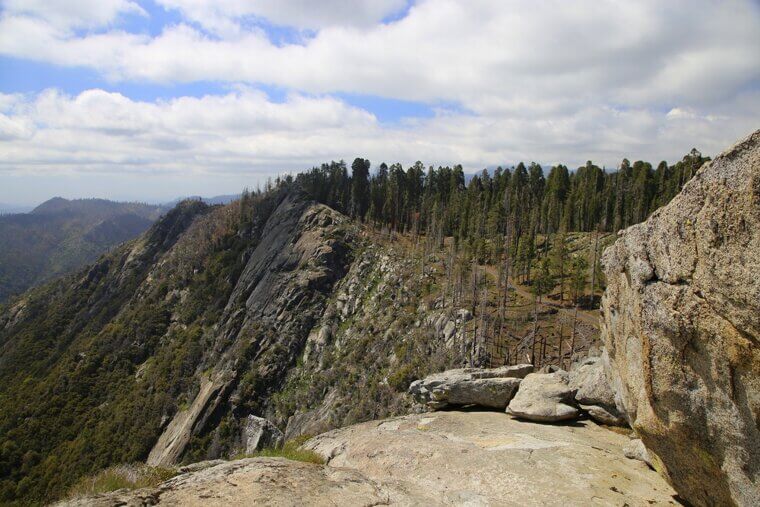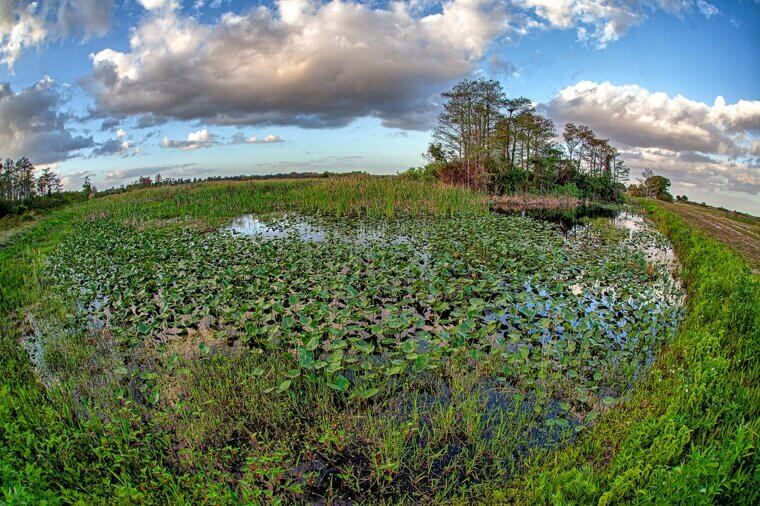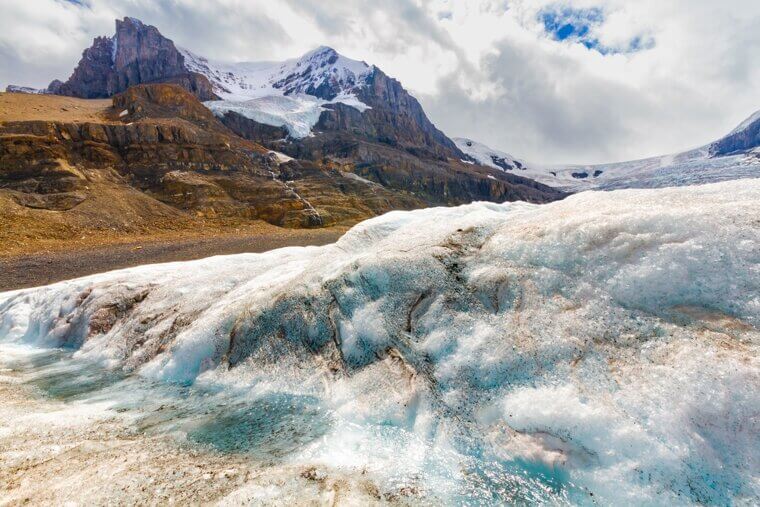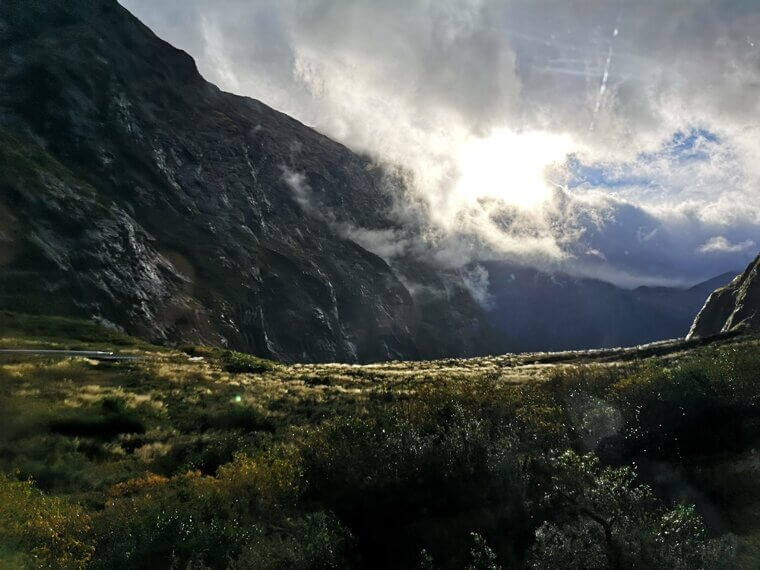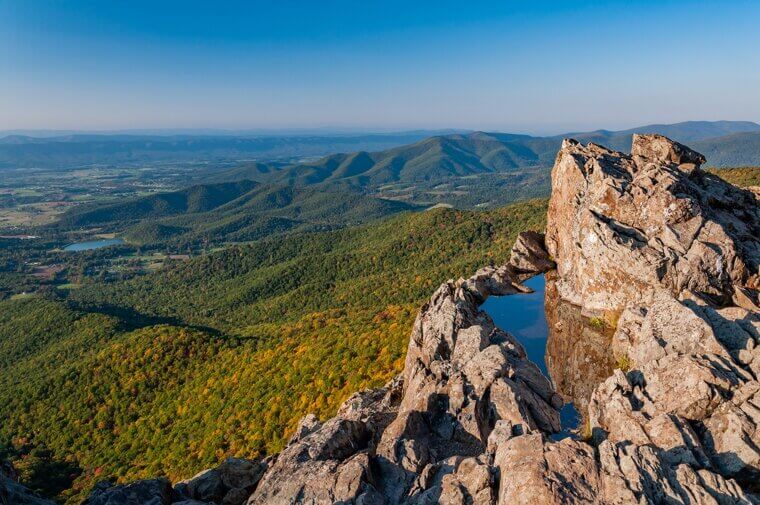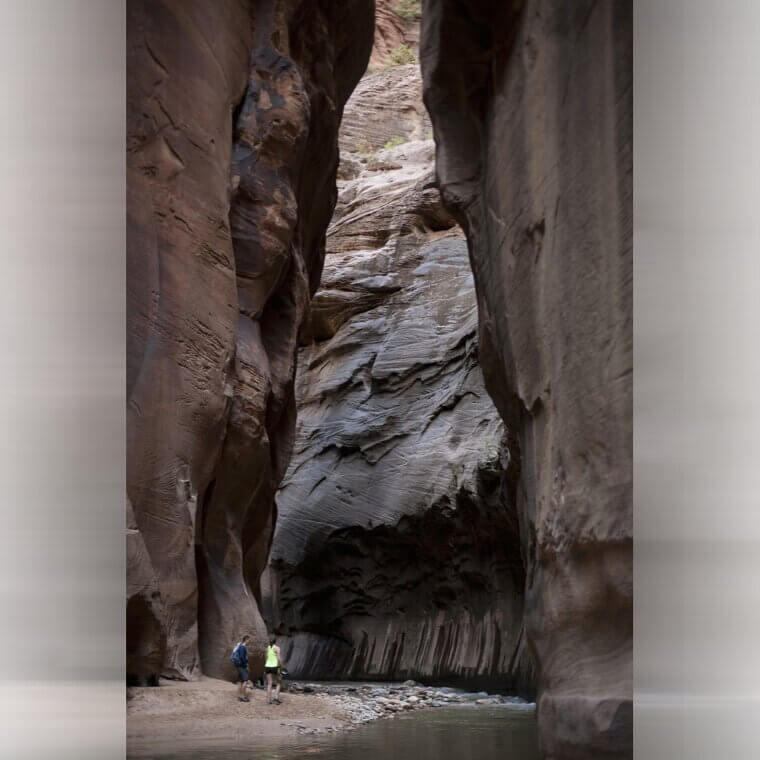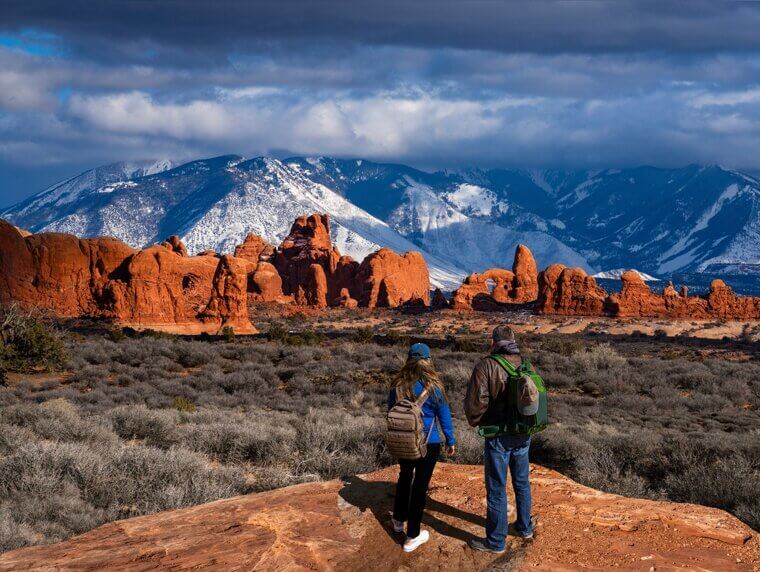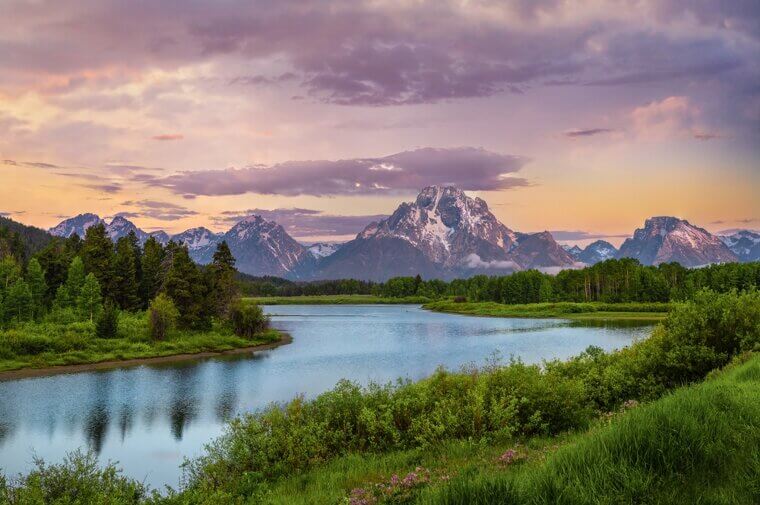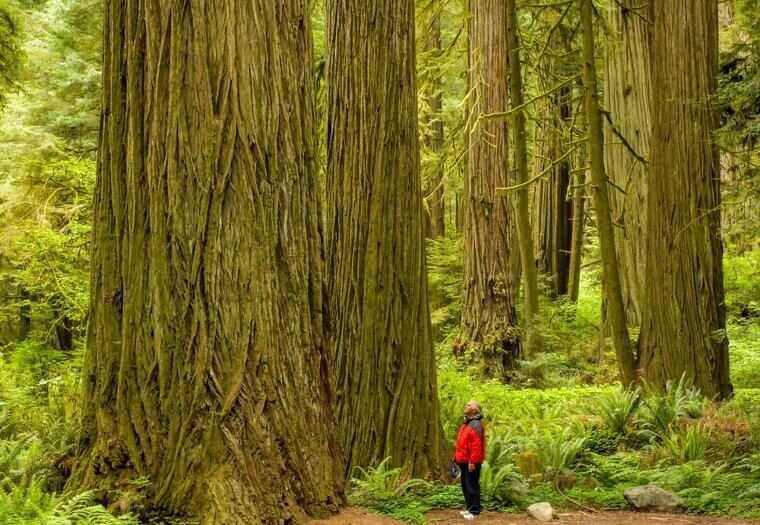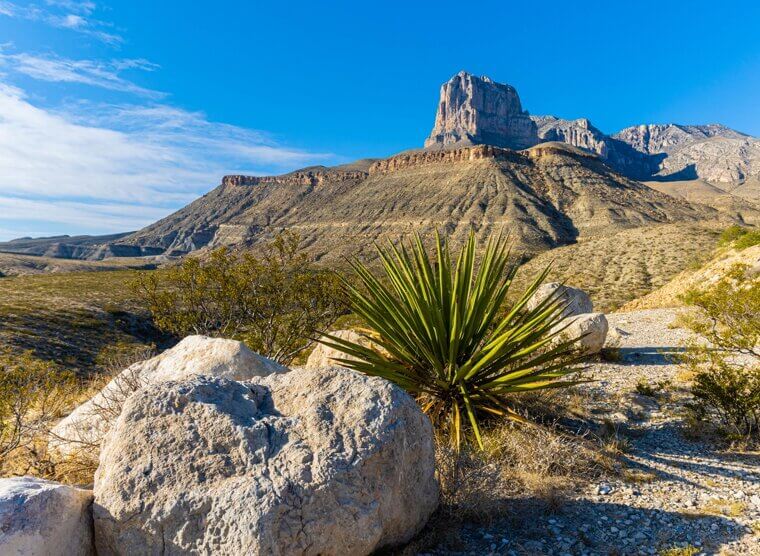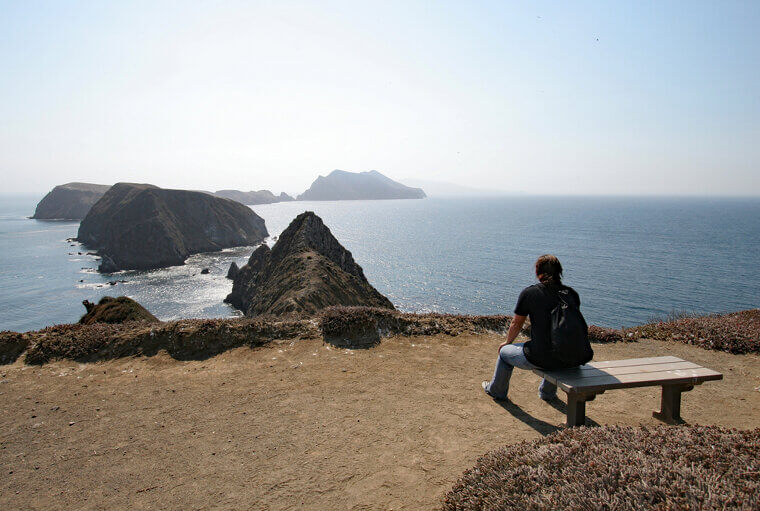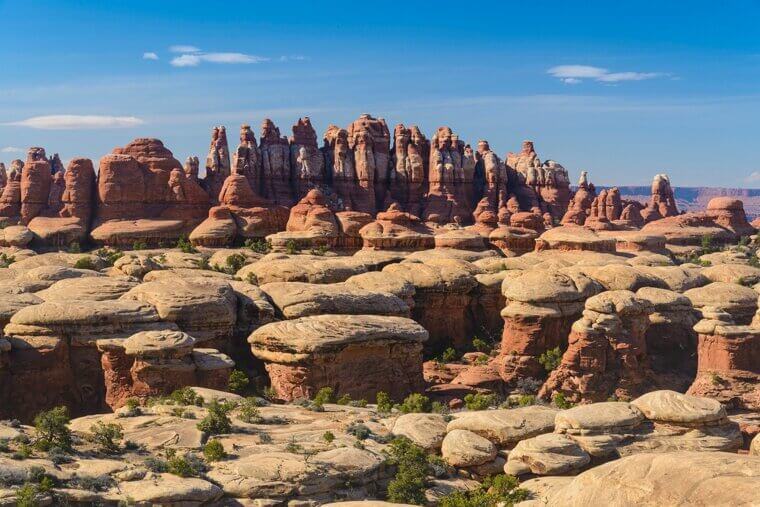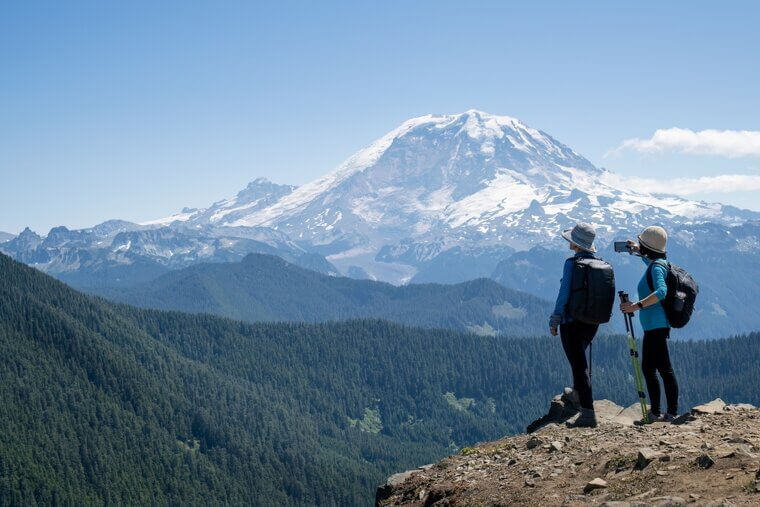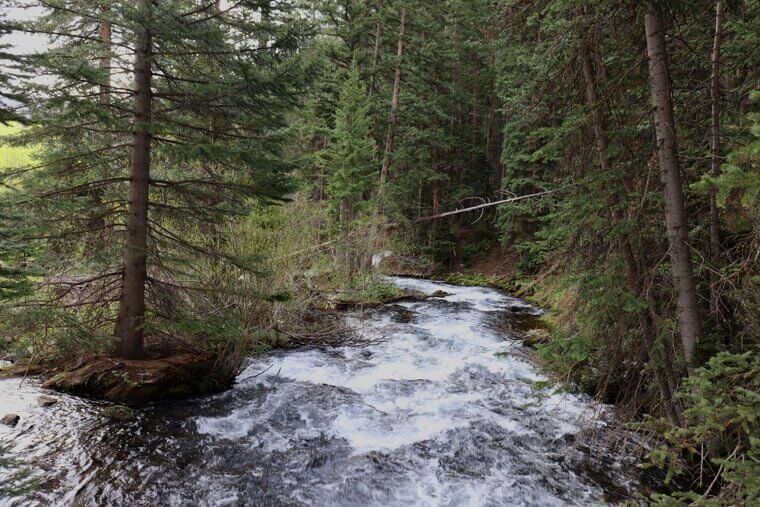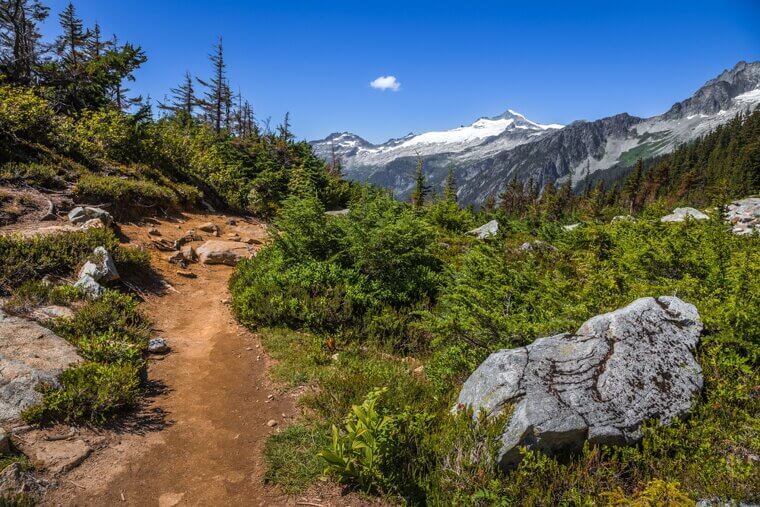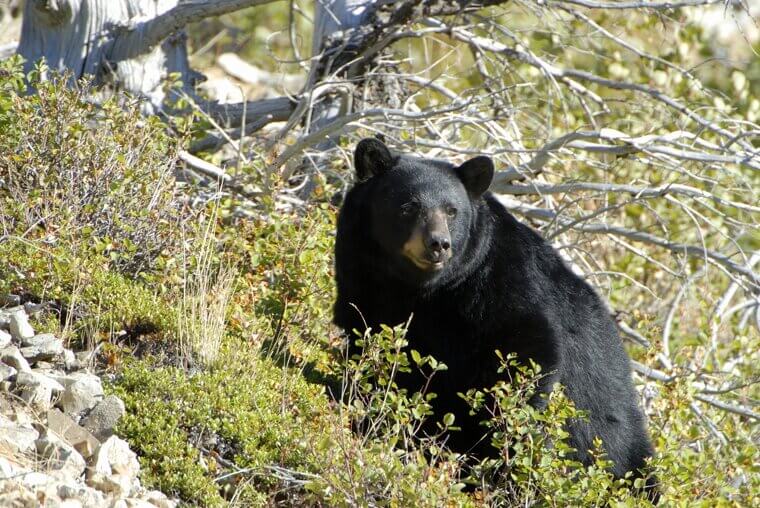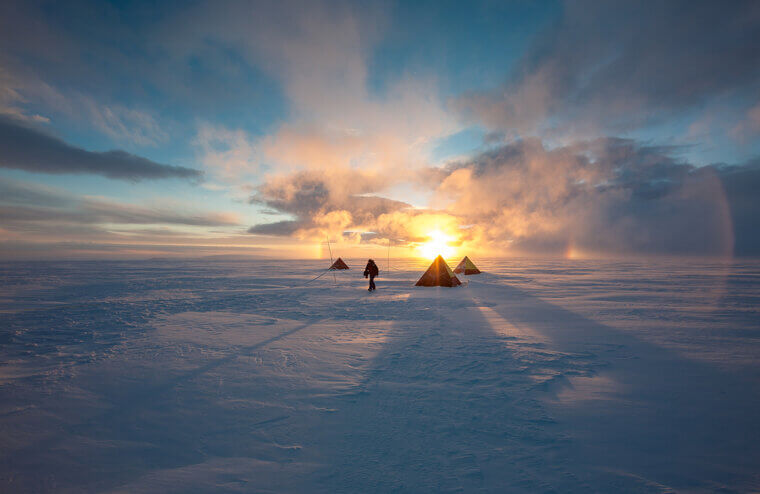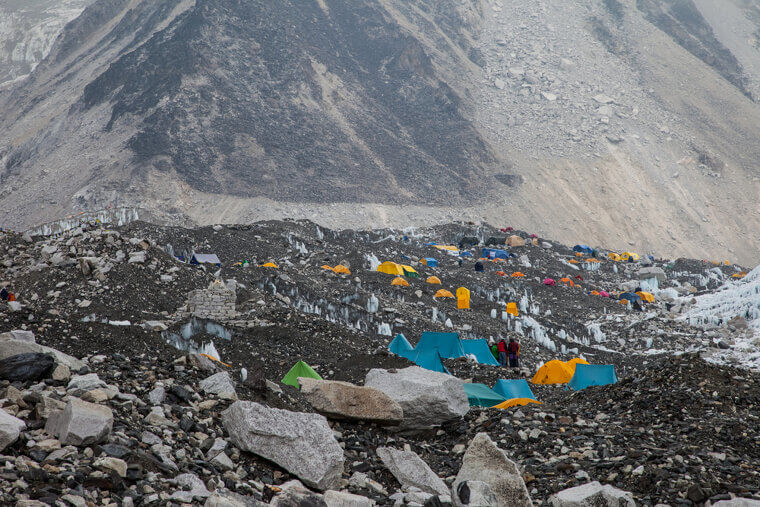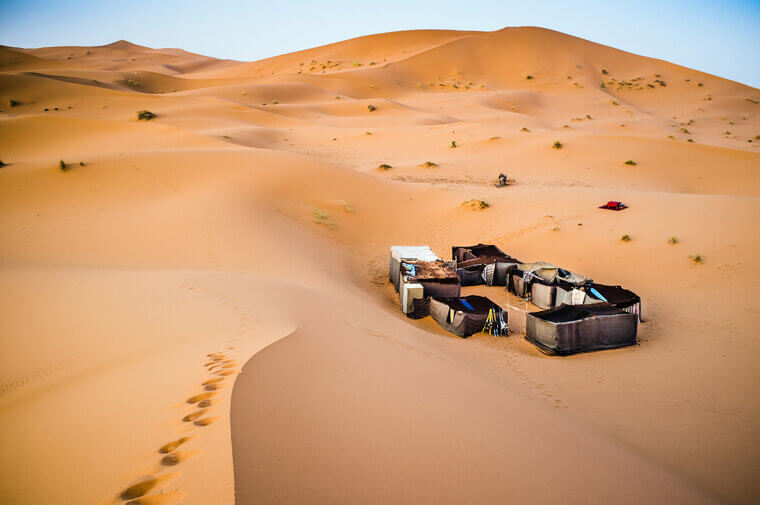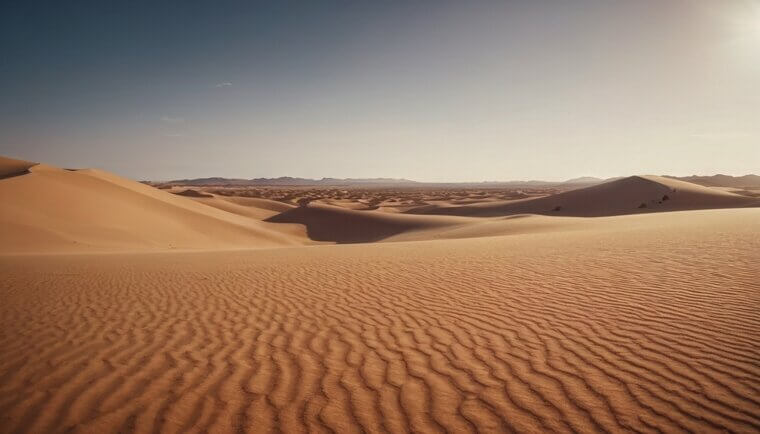Olympic National Park - Washington
Olympic National Park, located on the Olympic Peninsula in Washington State, is renowned for its diverse ecosystems, ranging from towering mountain peaks to lush rainforests. However, visitors should be aware of the potential risks associated with the park. The coastal areas are subject to unpredictable tide patterns and sudden weather changes, while the mountainous regions face threats from afternoon thunderstorms and lightning. It is strongly recommended to turn back if the weather worsens while hiking.
Additionally, straying off designated hiking trails can lead to extremely high-risk events, such as eroding landscapes and sudden drops, which can be nearly impossible to predict.
Death Valley National Park - California and Nevada
As the largest national park in the continental United States, the infamous Death Valley is known for its colorful landscapes, Titus Canyon, and eerie ghost towns. The Badwater Basin also boasts being the lowest point in North America, making it a compelling destination for outdoor enthusiasts. However, hikers should be cautious, as the park frequently experiences extreme heat waves and is home to many dangerous animals. If you're not prepared to encounter scorpions, black widow spiders, or rattlesnakes, you might want to reconsider traveling here.
From the tens of thousands of hazardous mining areas to the high risk of heat stroke and dehydration, Death Valley National Park should not be entered lightly.
Lake Mead - Nevada and Arizona
As the largest water reserve in the U.S., Lake Mead attracts a large number of outdoor adventurers to its striking blue waters. It offers some of the best fishing in the country, along with boating, canoeing, kayaking, biking, and even horseback riding. Given how it's marketed toward families, it can easily be mistaken for a safe outdoor area for all ages to enjoy. However, the lake has one of the highest mortality rates among national parks. Many visitors aren't prepared for its intensely cold and deep waters, leading to an unusually high number of drownings each year.
If you choose to visit the scenic views and sparkling waters by the Hoover Dam on the Colorado River, be sure to keep your guard up at all times, particularly if there are little ones.
Organ Pipe Cactus National Monument - Arizona
As a UNESCO Biosphere Reserve bordering the Mexican state of Sonora, Organ Pipe Cactus National Monument is home to a stunning display of over 2,000 plant species. It is a U.S. national monument known for its bountiful collection of cacti and is the only place where the senita and organ pipe cactus grow naturally. In this region, it’s not the natural world that poses significant risks to your health and safety—it’s the location. Much of it was even closed off to the public between 2003 and 2014 due to trafficking organizations.
The monument is considered one of the most dangerous national parks in the United States due to its history with smuggling, cartel groups, and violence. Visitors should approach this area with the utmost caution.
Glacier National Park - Montana
From ancient forests to breathtaking lake views, you can hardly find a more scenic place to camp than Glacier National Park. With more than 700 miles of trails, it is considered a year-round paradise. Naturally, people flock to the melting glaciers and valleys that straddle the Canadian border. However, with so much to offer, the dangers of Glacier National Park can easily be overlooked. Fields of snow and melting glaciers pose major hazards due to their unpredictability, as does the wildlife.
The park is home to grizzly bears and black bears, and it experiences visitor fatalities year after year. Anyone daring to venture into the park should stay on marked hiking trails.
Great Smoky Mountains National Park - North Carolina and Tennessee
With over 13 million visitors to the Great Smoky Mountains National Park in 2023 alone, it is believed to be the most visited national park in the United States. It straddles both Tennessee and North Carolina and has proven to be extremely popular thanks to its hiking, camping, mountaineering, fishing, and birdwatching opportunities, not to mention the famous Appalachian Trail within the park itself. While there are over 800 miles of trails to enjoy, many have suffered fatal injuries in the park, mostly due to motorcycle accidents and drownings.
In 2016, however, the national park experienced an unusually high number of forest fires, which resulted in 14 fatalities. Despite the high foot traffic, inexperienced hikers and campers need to approach this park with caution.
North Coyote Buttes - Arizona and Utah
North Coyote Buttes, also known as "The Wave," is situated between Arizona and Utah in the Paria Canyon/Vermilion Cliffs Wilderness. It issues a limited number of permits each day to help preserve its unique, undulating landscape. The sandstone formations make it a popular destination for amateur photographers willing to tackle the challenging 6.4-mile hike. However, there are a myriad of risks to be aware of when attempting to reach "The Wave." Summer temperatures can soar to extreme levels, and there is no access to additional water beyond what you bring.
Aside from the weather, the lack of clear markings along the trail is said to be confusing and has led to several fatalities over the years.
Glen Canyon National Recreation Area - Arizona and Utah
The Glen Canyon National Recreation Area covers over 1.2 million acres of rugged terrain, extending from the lower Cataract Canyon in Utah to the northern reaches of Arizona. It features the second-largest man-made lake in the United States, with stunning cliffs, gorges, and scenic drives to enjoy. Considered one of the best places to boat, few visitors leave disappointed—if they can avoid the hazards of the area. The rugged terrain and extreme desert climate pose risks to visitors, and as a result, the park has experienced several losses, injuries, and fatalities. There are also flash floods and an absence of lifeguards.
Based on the number of search and rescues carried out, Glen Canyon National Recreation Area is considered one of the riskiest national parks out there.
The Bright Angel Trail - Arizona
The Bright Angel Trail is an 18-mile path within Grand Canyon National Park in Arizona, following the Bright Angel Fault rim from the Grand Canyon down to the Colorado River. You’ve probably seen scenic vistas of its red and orange sandstone cliffs, but you may not have heard about the dangers posed by this underestimated trail. It receives more 911 calls than any other trail in the U.S., with over 200 search and rescues performed per year from heat-related injuries.
Aside from the heat, another 150 requests a year often stem from challenges posed by the elevation, sheer length, or treacherous turns along the way.
Mount Rainier National Park - Washington
You may be familiar with Mount Rainier National Park in Washington State, renowned for having the most glaciated peak in the mainland United States. Mount Rainier itself is an active volcano, from which five major rivers originate. But don't let the wildflower meadows and teeming wildlife fool you into thinking it doesn’t pose a serious risk to your safety. It is considered one of the most dangerous volcanoes in the world today due to the expectation that a major eruption could occur at any moment, and its relatively close proximity to the Seattle and Portland metropolitan areas.
To add to that, the sustained steep angle of the Liberty Ridge route on Mount Rainier makes it one of the most dangerous, accounting for a quarter of the park's total climbing fatalities.
Denali National Park - Alaska
Denali National Park and Preserve is situated in the central area of the Alaska Range, offering incredible mountain views and opportunities for flightseeing remote locations by helicopter. It encourages visitors of all ages to come and enjoy the campgrounds, making it a popular attraction for families. However, unlike many other national parks in the United States, Denali National Park is entirely trail-less, making it easy to embark on risky hikes across the mountainous landscape. The grizzly bears, wolves, and moose that call Denali home also pose risks.
The biggest risk to watch out for while exploring is your footing when climbing the mountains and hills, as falls have led to the most fatalities in Denali National Park.
Yellowstone National Park - Wyoming
Yellowstone National Park, though primarily located in Wyoming, also extends into parts of Montana and Idaho. Covering over 2.2 million acres of wilderness, the park is renowned for its stunning landscapes and geothermal features, particularly its famous hydrothermal hot springs. Visitors from around the world flock to Yellowstone to see the Grand Prismatic Spring, the diverse wildlife, or to enjoy water sports. However, the park's beauty comes with significant dangers, including risks of heat stroke, dehydration, and even fatal encounters with bison. These high-risk factors should not be underestimated when visiting this beautiful national park.
In 2024, a visitor had to be partially driven out of the park after burning his feet on the scorching sand, as helicopters were unable to land due to the extreme heat.
Joshua Tree National Park - California
Joshua Tree National Park has some of the most striking desert landscapes in the United States. It earned its name from the twisty Joshua trees that line the protected national park and has gained even more popularity in recent years due to its proximity to the annual Coachella music festival. Aside from the soaring temperatures that sometimes reach 120 degrees Fahrenheit, it’s home to venomous creatures like rattlesnakes and scorpions. Many who attempt to camp there overnight underestimate the cold night temperatures and harsh winds.
Hiking and camping in Joshua Tree National Park is further complicated by the fact that there has been a noticeable increase in the frequency of wildfires recorded in the area.
Yosemite National Park - California
Visitors flock to Yosemite National Park in California's Sierra Nevada mountain region for good reason. The park's granite cliffs, giant redwood trees, and stunning waterfalls make it a paradise for outdoor enthusiasts. However, the risks in Yosemite are significant and should be carefully considered. During the wet season, powerful water currents can appear suddenly, making rock hopping dangerous. The trails can be narrow and winding, and the high altitudes may pose challenges for inexperienced or unacclimatized visitors.
Most crucially, it's important to stay on the marked hiking paths and established trails to minimize the chances of encountering unstable terrain or getting lost.
Big Bend National Park - Texas
Big Bend National Park, located near the Texas-Mexico border, encompasses the Chihuahuan Desert and is one of the most diverse desert environments in the world, with 1,200 plant species and nearly 700 species of birds, reptiles, and mammals. Whether you're exploring the Santa Elena Canyon or hiking the Chisos Mountains, it's important to be aware that recent studies indicate the park is among the more dangerous national parks to visit. The risks stem from the combination of extreme heat and the park's remote location, which can complicate rescue efforts if they are needed.
Since 2013, almost 30 individuals have suffered fatal accidents at Big Bend National Park, making it one of the more risk-laden outdoor sites in North America.
Kings Canyon and Sequoia National Parks - California
Kings Canyon and Sequoia National Parks are adjacent parks in California's Sierra Nevada mountain range. Together, they are home to some of the largest trees in the world, as well as stunning mountain views, caves, and canyons. There's so much to explore, but it's important to consider safety guidelines when visiting these national parks. The environment can be more challenging than it initially appears, with uneven ground that can easily trip you up and the risk of falling rocks. And, be prepared for a few insect bites, especially if you’re visiting during the warmer months.
It's also possible to come across dangerous bears or mountain lions, so for those seeking adventure, it's crucial to know how to handle such encounters.
Everglades National Park - Florida
Florida's Everglades National Park is the third largest national park in the contiguous United States and has been designated a World Heritage Site since 1979. This protected area boasts a delicate ecosystem of wetlands, forests, and vibrant wildlife, making it a popular destination for outdoor enthusiasts. However, one of the park's most stunning features also presents significant dangers. The presence of alligators and crocodiles poses a risk, as these reptiles can be provoked by movements that resemble those of prey.
Additionally, the changing tides and currents can create hazards for inexperienced visitors, so it is generally recommended to avoid getting too close to the water.
Rocky Mountain National Park - Colorado
Those who have visited Rocky Mountain National Park in Colorado often boast of its spectacular mountain views and crystal-clear waters. The park's abundance of diverse wildlife and changing seasonal landscapes is making this recreational space more popular each year. However, the climate poses significant risks to visitors, as the rapidly changing temperatures can catch people off guard and unprepared. It's especially important to check weather reports from the area before packing for a trip, so you can be better prepared for the conditions you'll encounter. Despite being one of the most hiked areas in Colorado, it's also one of the most dangerous national parks.
There's also the risk of catching Colorado tick fever or Rocky Mountain spotted fever from local ticks, so it's important you remember to bring insect repellent.
Virgin Islands National Park - United States Virgin Islands
Virgin Islands National Park preserves over half of the land on Saint John, one of the Virgin Islands in the Caribbean Sea. With a tropical climate featuring lush forests and vibrant coral reefs, visitors flock to its sandy shores for scuba diving, snorkeling, and hiking. The dangers of Virgin Islands National Park are a bit different from those typically found in other U.S. national parks. Here, it's important to be cautious of poisonous marine life and toxic plants. From sea urchins with spiky spines to sharp coral edges, staying vigilant while exploring the waters is essential.
In addition to the perilous marine life, you'll want to be cautious of ocean currents, as drowning is the most common cause of fatalities in the park.
Shenandoah National Park - Virginia
The rocky peaks and waterfalls of Virginia's Shenandoah National Park make it a must-visit for many adventure-lovers. With various bird species, deer, and squirrels along the many trails, it's especially gratifying for animal enthusiasts. However, there's a risk of encountering the park's infamous black bears, whose numbers have been increasing. Those venturing into Shenandoah must take every precaution, including storing food in airtight containers at night. In addition to large black bears, tiny ticks are rampant in the park and have a history of transmitting diseases to humans.
Choosing to camp at Shenandoah National Park should not be taken lightly, and visiting the park's website for up-to-date safety concerns and changes is essential.
Zion National Park - Utah
Zion National Park in southwest Utah is famous for its deep, cavernous canyons. Visitors can hike through the Virgin River Narrows or opt for a scenic drive through several of the canyons. However, the risks can outweigh the benefits of visiting this popular national park during certain times of the year. The canyons are prone to flash floods during the wet and rainy seasons, making it extremely dangerous for any hiker along the paths.
Even if you avoid the wet season and visit during one of the drier months, you still run the risk of heat exhaustion and dehydration, as the area is prone to extreme temperature highs.
Arches National Park - Utah
The natural stone arches of Arches National Park in Utah are a wonder of the natural world. It's no surprise then that more than 1.8 million people visit these red rock formations every year despite the considerable risks. With few places to find shade while hiking in the park, many visitors struggle with the extreme heat. To reach the famous Delicate Arch viewpoint, you need to hike for 3 miles, much of which is uphill.
Wearing appropriate hiking footwear is also essential if you visit Arches National Park, as the often unstable sandy terrain makes it easy to slip, fall, or miss a step.
Grand Teton National Park - Wyoming
Grand Teton National Park has a lot to offer. Located in northwest Wyoming, the park is named after the tallest mountain in the Teton Range, the Grand Teton. One of the most impressive aspects of the park is that it still harbors much of the same plant and animal life that has existed in the region since prehistoric times. However, this can be both a blessing and a curse, as black bears, grizzly bears, and moose are known to frequent areas with visitors.
The best way to safeguard against any unfortunate encounters is to be extra vigilant about storing your food properly if hiking or camping in Grand Teton National Park.
Redwood National and State Parks - California
The Redwood National and State Parks stretch along the coast of Northern California. Here, you'll find some of the tallest Redwood trees on the planet, with some reaching heights of up to 350 feet. Whether you're interested in hiking through the dense forest or exploring the beach sand dunes, there is much adventure to be had. However, there are also several risks to be aware of, from powerful ocean swells driven by the Pacific Ocean to formidable elk that may charge if provoked.
When exploring the majestic beauty on offer at Redwood National and State Parks, it's important to stay alert and maintain a safe distance at all times.
Guadalupe Mountains National Park - Texas
Guadalupe Mountains National Park is located east of El Paso in Texas. It's a grassland paradise in the Chihuahuan Desert, well known for its pearly white Salt Basin Dunes and marine fossil reef mountains. With enchanting desert scenery and panoramic viewpoints, many hikers are tempted to explore this national park. However, there are safety concerns due to the park's remote location and rugged terrain. In recent years, motorcycle accidents have been the most fatal, as the sharp turns and often unpredictable topography make traveling around the mountains particularly hazardous.
If you choose to explore the wonders of the Guadalupe Mountains, it's crucial to carry all necessary emergency equipment, as it can take a long time for services to reach those in need.
Channel Islands National Park - California
Five of the eight Pacific Coast Channel Islands make up the Channel Islands National Park off the Southern California coast. From action-packed water sports to peaceful solitude among the wildlife, the park draws a diverse crowd. The main safety concern is the islands' isolation—they are only accessible by boat, and emergency services are extremely limited due to the remote location. Unsurprisingly, most fatalities in the park are due to drowning, with six such incidents occurring between 2010 and 2020.
For anyone planning a trip, it's essential to bring all necessary supplies, as none are available on the islands. Additionally, it's important to note that the entire park is located in a tsunami hazard zone.
Canyonlands National Park - Utah
Canyonlands National Park is a protected area in southeast Utah with four distinct desert districts. Each district has its own unique qualities that make it an adventurer's wonderland, but the park also presents notable challenges. It takes anywhere from 2 to 6 hours to travel between districts, making each location in the park remote. As a desert landscape, there are no opportunities to fill up on safe drinking water, which can be a challenge during the intensely hot summer months.
Additionally, the vastness of the park makes it easy to get lost, and much of the local wildlife carries deadly diseases. It's extremely important to arrive at Canyonlands fully prepared for any eventuality.
Mount Washington - New Hampshire
As the tallest peak in the Northeastern United States, Mount Washington attracts a significant number of visitors each year. There are several picturesque hiking routes to the summit, with the most popular being the Tuckerman Ravine/Lion Head Trails, which span almost 8 miles. However, it's not just the long distance that poses a safety risk—it's the unpredictable and rapidly changing weather in the region. Only the most experienced hikers are advised to attempt the climb to the summit, and even then, there is no guarantee of a safe journey.
Hikers must contend with sudden avalanches, wind storms, and significant exposure. On average, 25 search and rescue missions are carried out each year on Mount Washington.
The Maroon Bells - Colorado
The Maroon Bells consist of two bell-shaped mountain peaks located between Pitkin County and Gunnison County in Colorado. In addition to the awe-inspiring alpine views, you can enjoy the serene Maroon Creek Valley, six hiking trails, and several camping sites. However, don't let the stunning vistas deceive you—the dangers of this scenic area have earned the mountains the moniker "Deadly Bells." Since 2000, at least 10 people have met their end at the Maroon Bells, mostly due to the unstable mountain rock that can sweep hikers off their feet.
On average, search and rescue teams are called out to the area 12 times a year to assist climbers who find themselves in precarious situations.
North Cascades National Park - Washington
North Cascades National Park is a vast protected area in Washington, encompassing over 500,000 acres of recreational land, forests, and wilderness. Within the park, the Sahale Glacier, an offshoot of the Cascade Pass Trail, is becoming increasingly popular with hikers. There are some incredible alpine views to be had, but reaching them requires hiking through steep and dense forest. Additionally, the hike reaches an elevation of over 7,500 feet, which can lead to altitude sickness for some hikers.
The biggest risk, however, comes from sudden avalanches that are known to occur throughout the year. The challenging terrain also makes it extremely difficult for rescue teams to access when necessary.
Glacier National Park - Montana
There are amazing trail views to be enjoyed by those visiting the Huckleberry Mountain Lookout in Montana's Glacier National Park. Named after the huckleberries scattered along the trail during the warmer months, the area is also abundant with wildlife. This can be both a blessing and a curse, as the Lookout trail is home to a number of bears attracted by the berries. When hiking in this area, it's essential to bring bear spray to discourage any interactions with the animals.
The national park may close the trails on some days if bear encounters are deemed highly likely, but visitors still need to exercise caution. Allegedly, there's a bear within each mile radius of the grounds.
Special Conservation Area - Antarctica
When the entire Antarctica region was declared a Special Conservation Area by the Antarctic Treaty Parties in 1964, it still allowed for visitors to camp in one of the harshest environments on the planet. Visiting this vast and icy landmass offers unparalleled views, but it comes with significant risks. For one, camping in Antarctica is only recommended during the warmer months, which are still harsh and unforgiving. Only the most experienced campers should attempt something like Antartica.
The region is prone to blizzards, wind gusts, and whiteouts that are extremely difficult to predict, and travelers face risks such as frostbite, hypothermia, and snow blindness. Additionally, emergency services are far and few between.
Mount Everest Base Camp - Nepal
Adventurers flock to the world’s highest mountain above sea level, Mount Everest. Located on the border of Nepal, this infamous peak is considered one of the deadliest hiking and camping destinations in the world, but that has hardly deterred people from seeking the experience. Traveling to this region exposes you to risks such as freezing, frostbite, snow blindness, exhaustion, hypoxia, and hypothermia, not to mention the severe altitude sickness that has claimed lives in the past.
For those looking to attempt the climb, it is crucial to start training about a year before your intended visit, training for at least 5 days a week.
Sahara Desert - Morocco
The largest hot desert in the world, the Sahara Desert, spans 10 countries and covers nearly a third of the African continent. Home to exotic wildlife such as camels, oryx, hyenas, and jackals, it's no wonder that people are drawn to its sandy dunes for hiking and camping excursions. However, there are very real threats that adventurers should be aware of before embarking on a journey there. Daytime temperatures can soar to 117°F, while nighttime temperatures can drop below freezing.
Additionally, the endless sand dunes and frequent dust storms can make navigation extremely challenging. Hiring a guide or traveling with a group is essential for anyone looking to camp in the Sahara.
Pfronten Tree Camp - Germany
Offered by the Waldseilgarten Mountain Resort, their thrilling tree camping option has been growing in popularity over the years, and it's easy to see why. There's nothing quite like sleeping in a forest suspended in mid-air. While the views are undoubtedly spectacular, there are important safety concerns that shouldn't be overlooked. Visitors to the mountain resort will be hanging hundreds of meters above the ground in a tent supported only by ropes, with no additional support.
You'll need to have a lot of faith in the trees to which the ropes are tied, and you'll almost certainly need to attend rope training before spending a night in the trees.
